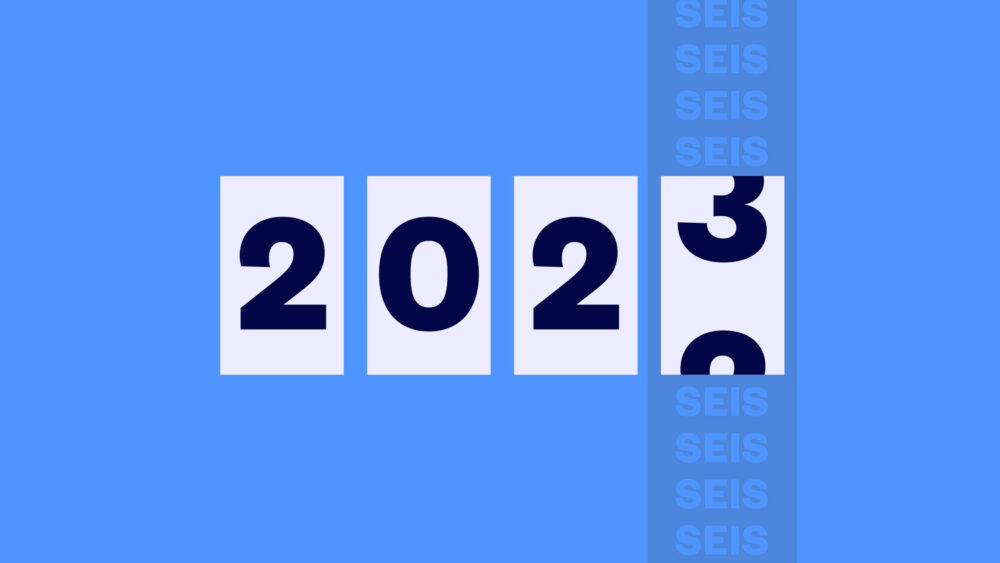Mini-Budget 2022: Key takeaways that could affect your business
Find out how changes to tax and business support announced in the government's Growth Plan 2022 could help your company...
In this post, we explain the changes to the Seed Enterprise Investment Scheme for 2023, how to take advantage of the new rules to start raising up to £250,000 right now, and the limitations and things to watch out for.
SEIS and EIS investment fuels the UK startup ecosystem. At SeedLegals we estimate that 80% of all early-stage investment (angel and seed funding rounds, companies raising up to £500,000) is SEIS or EIS investment, from angel investors and SEIS/EIS funds, with investors looking for those tax deductions on their investment, and no capital gains tax on sale of their shares later.
Although companies can raise up to £12 million in EIS when they’ve exhausted their £150,000 SEIS allowance, the increased benefits of SEIS to investors – a 50% deduction of their investment amount against their income tax versus 30% for EIS – meant that many investors and SEIS VC funds would only make investments eligible for SEIS. And to some extent, that created a £150,000 glass ceiling on first investment round sizes.
When the SEIS system was introduced back in 2012, raising £150,000 in a first round was just about perfect for most startups. But that was a decade ago. £150,000 ain’t what it used to be, companies really need to raise more than that now for their first round to have enough capital to build a team and get a product to market before needing to raise again.
The other problem that the £150,000 SEIS limit created was first round company valuations in the UK that weren’t increasing in line with valuations in, particularly, the US. SeedLegals data shows that companies dilute on average 10% to 15% in a first funding round, which gave rise to a pattern of companies raising £150,000 on pre-money valuations in the range of £850,000 to £1 million or so… which again was fine back in 2012, but things have moved on since then.
In the September 2022 mini budget, the UK government announced major improvements to the Seed Enterprise Investment Scheme. Despite some of the U-turns after Kwarteng’s mini budget, these changes to SEIS stayed in the government’s plans and they are currently going through Parliament:
For investors, they were previously limited to investing a maximum of £100,000 per year in SEIS, and up to £1 million in EIS. That will increased to a personal investor limit of £200,000 per year which should unlock more investor money (at least from those with more than £100,000 spare cash to invest).
That’s exciting news!
But there’s a problem: the changes were due to come into effect from 6 April 2023 – but they’re still going through Parliament. The changes haven’t yet been made – they’re still proposed changes.
So how can you take advantage of this today?
When the changes become law – assuming nothing changes in how the charges are written – they will apply from 6 April 2023.
And SEIS rules are applied on the date the shares are issued.
So… what if you could raise investment now and take advantage of the new £250,000 limit… Is it possible to do that…?
Yes, the good news is that even though the changes to SEIS will only become law later this year, if the changes are made exactly as they’re written, they’ll apply from 6 April 2023. And any shares you issue from now on will be after 6 April 2023 so the new SEIS rules will apply.
Here’s a list of things you can do to take advantage of the new rules right now, and the limitations and things to watch out for:
If you already have Advanced Assurance from HMRC that investments into your company qualify for SEIS:
We expect the SEIS changes to be approved by Parliament around July 2023. If you create a SeedFAST now, and set the longstop date for six months time – the maximum allowed to qualify for SEIS – then at the longstop date, the SEIS changes should have been become law and investments up to £250,000 will be eligible for SEIS because you’ll have issued the shares after 6 April 2023.
You’ll do SEIS compliance after the longstop date and by then the changes to SEIS should have become law, so HMRC will apply the new rules to your case.
If you don’t already have confirmation from HMRC that investments into your company will be eligible for SEIS, then you can still go ahead to apply for Advance Assurance – but until the changes to SEIS become law (probably after July 2023), HMRC will use the existing criteria. This means to obtain your Advance Assurance status, your company must comply with the existing rules: you must have been trading for less than two years, have gross assets of less than £200,000 and so on.
When you have Advance Assurance, this shows that investments into your company qualifies for SEIS. So when the law changes to say that the limit is £250,000 rather than £150,000, then you’re all set to raise £250,000. (See section above: How to use SeedFASTs to raise £250,000 in SEIS starting today)
If you’ve already raised the current maximum of £150,000 in SEIS, you can raise up to £100,000 more as long as:
1. your company has been trading for less than 3 years at the date the shares are issued
Assuming you issue the share on or after 6 April 2023 and that the SEIS changes become law as they are currently written, then the new legislation will apply to your fundraising.
and
2. you haven’t issued EIS shares yet
This applies now and after the changes become law: you can’t raise with SEIS if you’ve issued EIS shares.
The SEIS rules are clear: ‘No SEIS after EIS’ – which means if your company has ever issued EIS shares, you can never raise SEIS after that. So, unfortunately the new rules won’t help you here.
One of the many advantages of raising with SeedFASTs is you can freely mix and match SEIS and EIS investments. For example, you could:
… all with SeedFASTs.
It’s fine that Charles’ SEIS SeedFAST investment comes after Bob’s EIS investment because the ‘no SEIS after EIS’ rule applies to when the shares are issued, not when the funds were received, So when the SeedFASTs convert you’ll need to make sure that the EIS investments all convert into shares at least one day after all the SEIS investments convert into shares. If you do your SeedFAST conversions on SeedLegals, the platform automatically sorts all that for you.
Use SeedFAST to take a one-off investment before a funding round. SEIS compatible, no company valuation required, your SeedFAST can be ready to sign in minutes.
Find out moreIf you plan to raise a mix of SEIS and EIS (or non-SEIS) money either in a funding round or by way of SeedFASTs, you need to be careful to avoid going over the £200,000 gross asset limit – which will change to £350,000 when the SEIS changes become law.
Gross assets for SEIS purposes are defined as the total assets of the company excluding the SEIS investments themselves. There’s more detail on this in our article: Check you meet the SEIS/EIS gross assets requirement
This means that you can use SeedFASTs now to raise:
and still be within the new £350,000 gross assets limit when the SeedFASTs convert.
Here’s why it works:
The above points assume that your company doesn’t have any other qualifying assets or cash in the bank – if you do, then of course you’ll need to factor in those other assets when you calculate your company’s gross assets.
Remember: it’s the money in the bank at the time the shares are issued that counts. So if you raised £500,000 in EIS investment and spent £200,000 of that EIS money before those SeedFASTs convert, then your company’s gross assets (according to HMRC) won’t include that £200,000. That’s assuming you spent the money on things like paying salaries, rather than buying equipment or stock (or anything that would be an ‘asset’).
Update 6 April 2023: These SEIS changes are in the Finance (No. 2) Bill which is currently going through Parliament. You can read more in the policy paper and follow the progress of the Bill.
Until Parliament approves the changes and HMRC confirms the exact details (for example, that the new rules will apply to shares issued on or after 6 April 2023 even if the funds were received before then) all the above is not legal advice.
We expect the Finance (No.2) Bill to be given Royal Assent around July 2023. The changes to SEIS could be changed or cancelled before they become law – but we believe this is unlikely.
You can talk to investors and make plans based on the above, but there’s no guarantee that the SEIS changes will be made, or that the changes will be made exactly as described in this post. We’ll update this post when the SEIS changes become law and HMRC updates their website.
Ready to raise with SeedFAST to make the most of the new SEIS limits? Book a free call with one of our funding strategists – bring your questions to get answers fast.

Sources
Gov.uk | Policy paper | Increasing the limits of the Seed Enterprise Investment Scheme | Accessed 13/03/23
Parliament UK | Finance (No. 2) Bill | Accessed 05/04/23
Gov.uk | PDF | Autumn Statement 2022 | Accessed 17/11/22 (see page 35, 3.31)
Growth Plan 2022







